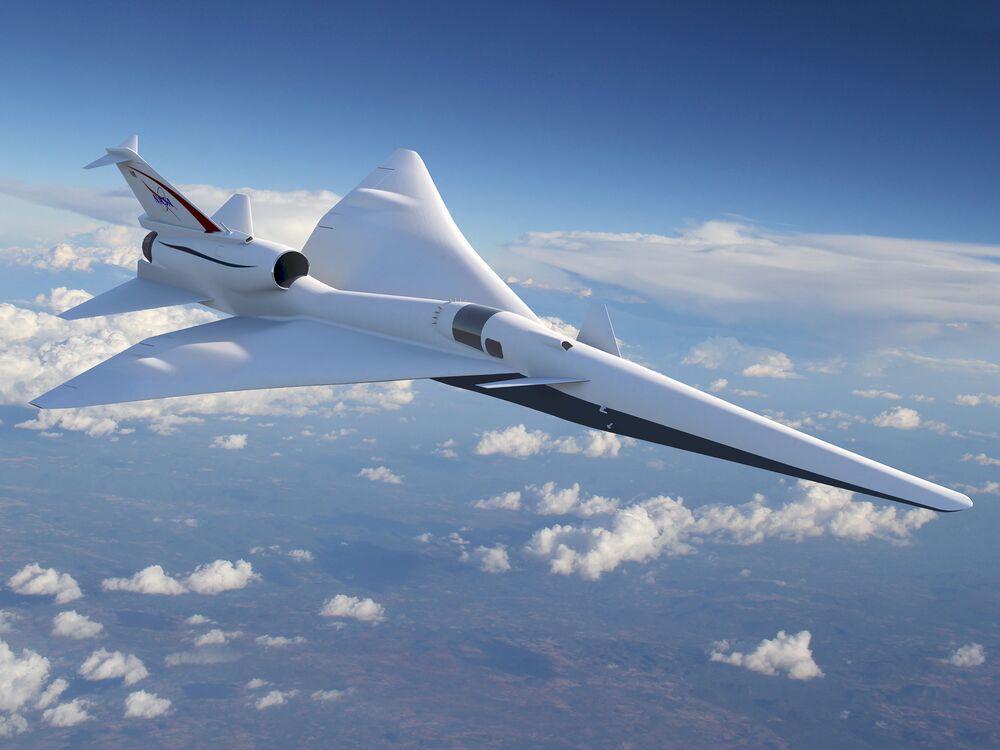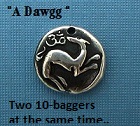NASA Has a Way to Cut Your Flight Time in Half
Post# of 51889
The space agency’s supersonic plane design could be quiet enough to lift the long-standing ban on overland travel, if it makes it to production.

For almost a half-century there’s been a clear speed limit on most commercial air travel: 660 miles per hour, the rate at which a typical-size plane traveling at 30,000 feet breaks the sound barrier and creates a 30-mile-wide, continuous sonic boom. The ground-level disturbances that result—shattered windows, cracked plaster, maddened farm animals—have kept supersonic travel mostly off-limits since 1973, when the Federal Aviation Administration banned its use over U.S. soil.
That may be changing. In August, NASA says, it will begin taking bids for construction of a demo model of a plane able to reduce the sonic boom to something like the hum you’d hear inside a Mercedes-Benz on the interstate. The agency’s researchers say their design, a smaller-scale model of which was successfully tested in a wind tunnel at the end of June, should cut the six-hour flight time from New York to Los Angeles in half. NASA proposes spending $390 million over five years to build the demo plane and test it over populated areas. The first year of funding is included in President Trump’s 2018 budget proposal.
Over the next decade, growth in air transportation and distances flown “will drive the demand for broadly available faster air travel,” says Peter Coen, project manager for NASA’s commercial supersonic research team. “That’s going to make it possible for companies to offer competitive products in the future.” NASA plans to share the technology resulting from the tests with U.S. plane makers, meaning a head start for the likes of Lockheed Martin, General Dynamics, Boeing, and startups such as Boom Technology and billionaire Robert Bass’s Aerion
Lockheed helped create NASA’s design, using fluid dynamics modeling made possible in the past decade or so by increasingly powerful computers. Together, Lockheed and NASA tested and mapped how subtle differences in aircraft shapes affect the supersonic shock waves they create. The design they’ve settled on keeps sound waves from merging into the sharp N pattern of a sonic boom, according to Peter Iosifidis, Lockheed’s design program manager on June’s small-scale model. Instead, the waves are kept dispersed across a wide range of points behind the plane, leaving the resulting supersonics a mere hum.
NASA is targeting a sound level of 60 to 65 A-weighted decibels (dBa), Coen says. That’s about as loud as that luxury car on the highway or the background conversation in a busy restaurant. Iosifidis says that Lockheed’s research shows the design can maintain that sound level at commercial size and his team’s planned demo will be 94 feet long, have room for one pilot, fly as high as 55,000 feet, and run on one of the twin General Electric Co. engines that power Boeing Co.’s F/A-18 fighter jet. “Now you’re getting down to that level where, as far as approval from the general public, it would probably be something that’s acceptable,” he says.
By comparison, the Concorde, that bygone icon of the Champagne-sipping, caviar-scarfing supersonic jet set, had a perceived noise level several times louder, at 90 dBa. The plane’s advent in the 1970s helped lead Congress to pass the overland ban in the first place; its takeoffs and landings generated hundreds of noise complaints and wouldn’t come close to meeting today’s regulations. Partly because of the ban, the Concorde wound up being a money pit for Air France and British Airways and was mothballed in 2003.
Of the three major obstacles to supersonic travel, which also include high carbon emissions and airport engine noise, the boom has been the toughest to clear, Coen says. GE is working on designs that can quiet its engines, including by placing them above a plane’s wings, and NASA has funded a MIT study on ways to address the environmental impact. “Manufacturers will not take the lead in developing an aircraft that they can’t fly,” Iosifidis says. “That’s where NASA said we’ve got to go change the rule, and this is the path to making that happen.”
Don’t pack your bags for a supersonic trip just yet. The fourth major obstacle may be Washington, because the language of the 1973 ban will require the FAA or Congress to explicitly undo it even if technology renders it obsolete.
What’s more, while established aerospace companies, such as General Dynamics Corp., which owns Gulfstream Aerospace, have been researching supersonic jets for years and startups (Boom, Spike Aerospace) have reignited interest in solving the technical challenges, all their efforts remain in the planning stages. There’s a lot of work left to be done.
Still, if everything goes as planned, NASA will test the demo plane over as many as six communities beginning in 2022, Coen says. That’s the first step toward appealing to lawmakers and regulators to lift the ban. This time, he says, is different, because the toughest technical challenge has been solved. “We’ve got a lot of support in NASA and the administration and in Congress for making this happen. I’m pretty excited about our prospects.”
(Corrects the perceived difference in noise between the Concorde and NASA’s proposed jet in the sixth paragraph.)
BOTTOM LINE - NASA and Lockheed say their design makes a supersonic plane as quiet as the inside of a Mercedes on the highway. There’s $390 million up for grabs to make and test a demo.
 (0)
(0) (0)
(0)